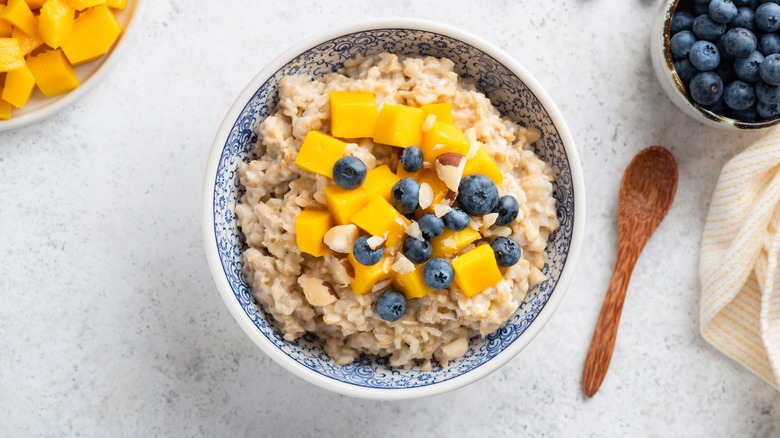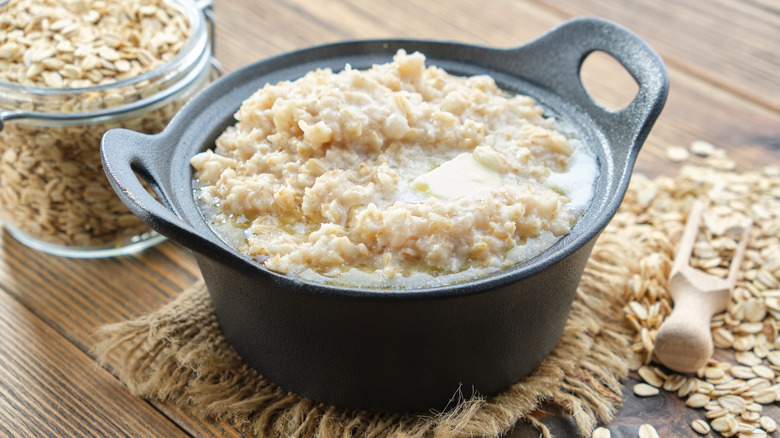The Simple Way To Stop Oatmeal On The Stove From Boiling Over
Oatmeal is one of those breakfasts that seems mundane from afar; there's not much flavor or vibrant colors to feast your eyes on. But the beauty of it lies in how it welcomes a plethora of other toppings, sauces, and flavor combinations. Plus, it's quite healthy to boot, as oats contain lots of antioxidants, manganese, and the soluble fiber beta-glucan, per Healthline.
One might indulge in a dessert-like oatmeal treat composed of honey, berries, nuts, and whipped cream. Or, savory toppings like arugula, poached eggs, and avocados may transform it into a savory lunchtime meal. These lend to oatmeal's versatility, where it can initially be found in the choice of cooking liquid.
Plus, whether it's water, milk, almond milk, oat milk, or soy milk, oatmeal will welcome such a foundation with open arms. That is, until the oats and liquid start to boil over on the stove or in the microwave. Here's why that happens and how to prevent this mishap in the future.
Steam can't escape from swelled oats
Cooking Detective explains that oats like to soak up the liquid that it cooks in, but sometimes, certain grain types take in way too much liquid, which causes them to swell. When that happens, steam can't escape, and those bubbles from the hot liquid overboil and spill out (via Cook's Illustrated), causing a mess and a high chance of starting the oatmeal batch all over again.
Luckily, the solutions are simple to execute, be it for a microwave or a stove. If you're a stovetop person, all you have to do is stir the oatmeal. It doesn't have to be continuous — this isn't parmesan risotto, after all. Just a few stirs as the oatmeal simmers is all you need to take care of those pesky bubbles, according to the latter source.
If the microwave is your BFF, just microwave the meal in a larger bowl. Microwave Meal Prep states that the bowl should be deep, and the oatmeal, liquid, and any other ingredients shouldn't rise above ⅔ of the dish's height. They also suggest leaving the bowl uncovered so the steam can flow freely outward, as well as stirring the oats often after pausing at certain intervals. Sometimes, oats get a little fussy and boil over, but luckily, those few good stirs on the stove and a large, wide bowl for the microwave are all you need to make the very best oatmeal.

